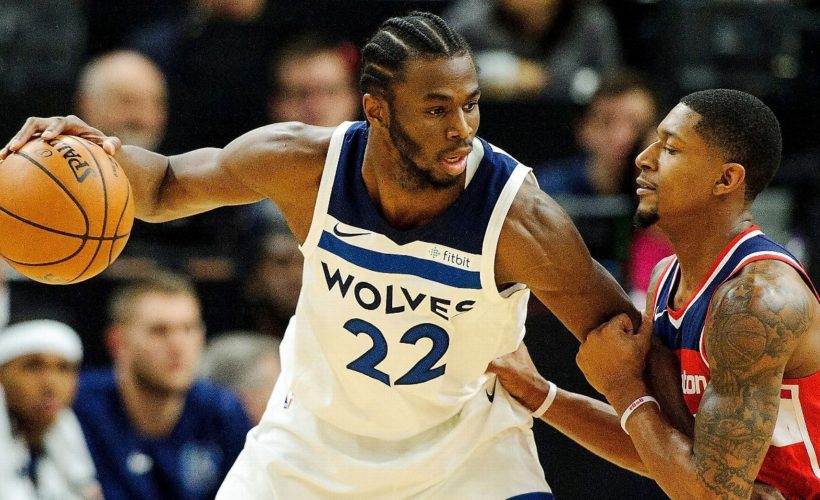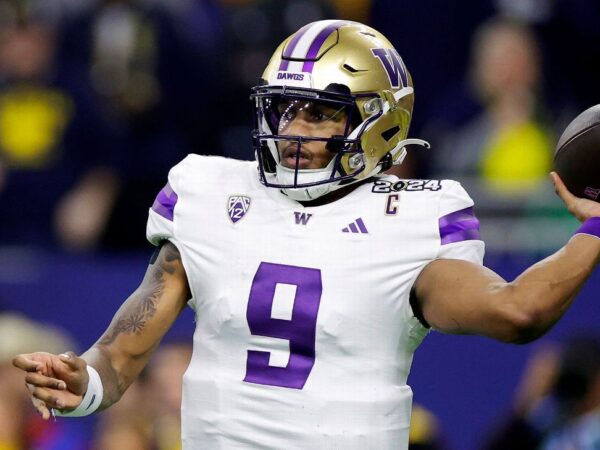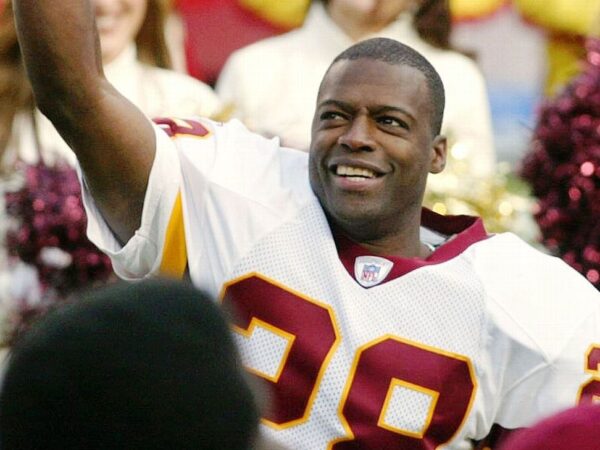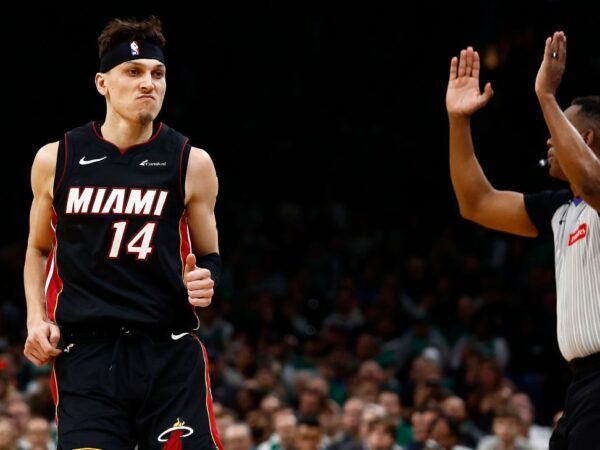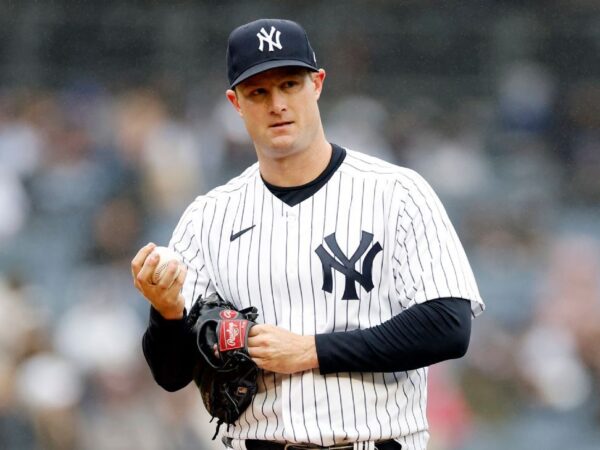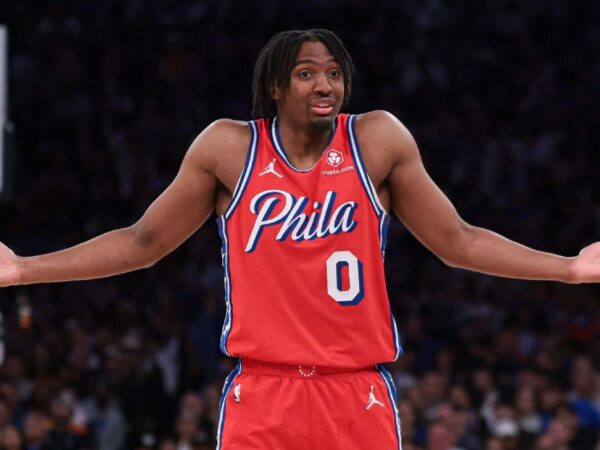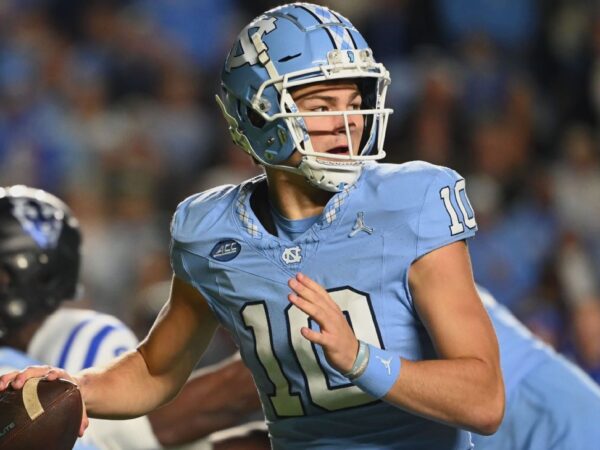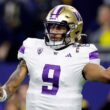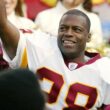It’s time for the first of our annual NBA preview pieces: my six most intriguing players for the upcoming season. I don’t pick superstars, rookies or second-year guys. We all know they are intriguing. The aim is to find swing players on swing teams.
Ricky Rubio, Utah Jazz
About three minutes into Jazz’s dispiriting Jan. 22 road loss to the Hawks, Ricky Rubio missed a layup. He was 0-of-5. Quin Snyder, Utah’s coach, removed Rubio and sat next to him for a chat. Snyder suggested those five shots had been something less than good. Rubio countered that he was open. Snyder put Rubio back in 45 seconds later.
The loss dropped the Jazz to 19-28. When they arrived at their hotel in Detroit the next day, Snyder got on the elevator with Rubio and two other Utah players. Snyder told Rubio he had reviewed film, and conceded that those five looks were fine, the two recall. It was not an accident that Snyder said this within earshot of two teammates. Rubio needed to hear it. The rest of the team did, too.
“He gave me confidence,” Rubio says.
With about 5 minutes, 30 seconds left in that next Pistons game, Anthony Tolliver accidentally elbowed Rubio in the eye, opening a gash. Utah’s trainers normally stitch up such cuts, a process that would have kept Rubio out the rest of the game. Rubio insisted on returning. He felt good, and confident, and Utah had to win.
The trainers temporarily closed the wound with some goopy adhesive. Rubio missed less than two minutes. A week later, doctors reopened the cut so they could stitch it properly.
Utah beat Detroit in overtime. They would not lose for a month. Everyone within the team remembers Rubio’s toughness that night galvanizing them. Meanwhile, Rubio was reborn as something no one thought he could be: a hybrid playmaker alongside another ball-dominant stud — Donovan Mitchell.
Rubio had trouble adjusting to Utah’s equal opportunity offense. What was the point of stashing a passing wizard with a rickety jump shot away from the ball?
“He would say to me, ‘I’m used to bringing the ball up every time,'” says Joe Ingles, who played with Rubio in Spain and sits next to him on the team plane.
Rubio discovered sharing the ball concealed his weakness — that jumper — instead of exacerbating it. When Mitchell started possessions with a pick-and-roll on one side of the floor, he bent the entire defense toward him. They could not gird themselves to duck under a Rubio pick-and-roll, because they did not know if Rubio would get the ball. “The beauty of our team is that anyone can shoot,” Ingles says. “Especially Donovan. He always shoots.” (Note: Ingles was teasing. He is always teasing.)
When Mitchell swung the ball to him, Rubio would often find the defense scrambling. He had a head start.
Snyder added more complex misdirection, and plays in which Rubio and Mitchell screened for each other.
“It really helped,” Rubio says. “I was used to running the first pick-and-roll and creating for others. Now others create for me, and then I can create for others.”
Utah’s system depends on smart players taking small advantages and turning them into bigger ones. The difference between widening an advantage and merely maintaining it is often a subtle bit of timing. That is where Rubio’s genius hides. He releases the ball earlier than most point guards might when he senses the next guy has a better chance to exploit whatever holes Utah has opened:
He throws conventional passes from unconventional angles, timed to inflict maximum pain; look how this corner-to-corner beauty approaches Ingles’ hands while his defender, Corey Brewer, is still drifting into the paint:
(There is utilitarian value in being perhaps the league’s most convincing no-look passer.)
Rubio even picked up the Snyderian habit of running into passes — expanding that head start:
“They taught me that,” Rubio says.
A shaky start turned into a marriage of high-IQ player and high-IQ system. But it worked only because Rubio accepted that he had to look for his own shot more. Every secondary attacker does. He needed that boost in confidence to arrive there.
The Jazz hoped Rubio could hit catch-and-shoot 3-pointers at an acceptable rate, and helped soften the trajectory of his shot. He drained 38 percent of those catch-and-shoot 3s, including a memorable game-winner in Toronto, and 35 percent from the corners.
More than that, he flashed a new aggression and panache — mean crossovers, hesitation dribbles, scoop shots Utah helped Rubio refine to improve his long-suspect finishing.
(Yeah, Rubio missed. But look at that showmanship!)
“I had those things in my game, but I was just scared before,” Rubio says. “I don’t even know why. In my head it was always, ‘Do the right thing and don’t make mistakes.'”
The more defenders worry about Rubio shooting, the more passing lanes open for him.
Just as Utah injected Rubio with bravado, he injected the league’s slowest team with speed. Utah crept up the pace rankings, and their small-ball closing lineup — Rubio, MItchell, Ingles, Jae Crowder, Rudy Gobert — played at about the same pace as the league’s fastest team, per NBA.com.
Rubio has to sustain this for Utah to continue climbing. It won’t be easy. There will be nights when Rubio spends too much time in the corner, a passive decoy defenses ignore. His jumper will hit troughs. The Rubio/Gobert/Derrick Favors trio needs to show it can survive on offense over a full season; Favors’ improvement on corner 3s and as a playmaker in space will be crucial, too.
Rubio is a free agent this summer, and not yet 28. The Jazz could have a bonanza of cap space. If the Rubio-Mitchell partnership thrives, they will sacrifice a lot of it to keep building.
Dejounte Murray, San Antonio Spurs
Murray knows everything has changed in San Antonio. “Everything that went on this summer was crazy,” he says. “But I’m ready to be a leader. I’m a born leader.”
Murray is suddenly the most important player in projecting San Antonio a half-decade from now. If he becomes the borderline star they believe he can be, the Spurs will have a road map. If not, they could wander the NBA wilderness.
Murray’s development will swing on his jumper. Through two seasons, he has been one of the worst shooters in the league. He flicked more low-value midrange shots than almost anyone else at his position. He shot them poorly. He shot poorly from everywhere. Only Rubio and Tony Parker saw defenders duck under screens more often, per Second Spectrum tracking data.
The Spurs nearly halved Murray’s pick-and-roll usage in the playoffs, per Second Spectrum. The Warriors didn’t even pretend to guard him. He spent more time getting out of the way of LaMarcus Aldridge post-ups than he did running the offense.
Lineups with four outside shooters can accommodate one bricky slasher. The Spurs couldn’t play that way last season, and they don’t project to do so now with Aldridge and DeMar DeRozan hoarding the midrange — and the ball. Playing fast would help. The Spurs don’t figure to do that, either.
Good news: Murray spent much of the summer reworking his shot with Chip Engelland, the Spurs’ famed shot doctor, and the team is surprisingly optimistic about the early returns. “It looks like a completely different game for him,” says Ettore Messina, a Spurs assistant. As with Rubio, a more threatening shot would reveal more passing lanes for Murray, who has so far dished assists at a pathetic rate for a lead guard.
Engelland and Murray started at the rim, and worked out. “I am not going to be shooting pull-up 3s,” Murray says, laughing. He honed clean catch-and-shoot 3s, because, “Let’s face it, teams are going to leave me open,” he says. He drilled his midrange pull-up — a shot he has to make at something like a 45 percent clip (if not better, given how open he is) when defenders hang back.
A lot of point guards who get the Rondo treatment — Russell Westbrook, John Wall, prime Derrick Rose — are so fast, they outrace defenders who slither under picks. Murray hasn’t shown that. He swears he can do it. “It’s funny you notice that, because Becky [Hammon, another Spurs assistant] is always on me about it,” Murray says. “I have that. I just kinda slacked on it last season. I was trying to feel the game out. Because if you try something and mess up here, you know you are going to the bench.”
Murray is barely 22. He’s only now learning the dark arts that point guards with shaky jumpers use to loosen the defense — shoulder fakes that tilt defenders off-balance before a pick arrives, instant re-screens. He sometimes picks up his dribble one step early, before really compromising the defense:
The timing will come. When the season ended, Murray asked the Spurs video crew for a trove of film showing his mistakes, highlights, pocket passes he missed, clips that would remind him where certain teammates like to receive the ball.
He’s huge for his position, with a giant wingspan. When he puts on muscle, he’s going to finish over and through a lot of people.
He has a deep bag of paint shots he can release with both hands, from weird angles.
Murray is already a very good defender. Being ignored has taught him to skulk around the paint for drop-off passes and offensive rebounds.
Those little extras on offense are nice. But without a workable jumper, Murray can rise only so far.
“It’s a big, big year,” Murray says.
Boston’s Big Five
Forget the buzz about LeBron playing center, or DeMarcus Cousins lumbering into the Warriors’ starting five. This quintet is the most exciting group since Golden State stumbled into the Death Lineup: Kyrie Irving, Jaylen Brown, Jayson Tatum, Gordon Hayward and Al Horford. The level of shooting, playmaking, and switchability on defense (minus Irving) is outrageous.
Think of all the switch-proof pick-and-roll combinations! Irving can roast bigger guys on switches; Brown, Tatum and Horford are well-versed at backing down smaller defenders on the other end of those switches. (Bully ball is the last piece missing in Hayward’s game; he worked on it a ton going into last season.)
The Celtics were reluctant to go small with Horford at center and Brown and Tatum splitting power forward duty; Marcus Morris was their crutch. But when they did, the results were scary. Counting only lineups that logged at least 10 minutes and featured Horford at center alongside any four of Irving, Brown, Tatum, Marcus Smart and Terry Rozier, Boston outscored opponents by 75 points in 276 total minutes — equivalent to about 13 points per game. None of those lineups featured Hayward.
I suspect we will see a lot of this group, and that it will start its fair share of games. Remember: It was Brad Stevens’ opening night starting five last season, before catastrophe struck. Aron Baynes may start against beefy centers, but reserving Horford a large slice of power forward minutes will make it hard for Stevens to find enough time for all his perimeter players.
We should probably start preparing nicknames for this lineup. I am bad at nicknames. The best I could do off the top of my head was “Irish Exit.” Suggestions?
Andrew Wiggins, Minnesota Timberwolves
The Jimmy Butler drama masks another festering stench: What if Wiggins is just, like, not good? I was a cautious Wiggins optimist when analytics folks buried him as a teenaged rookie, but he has shown zero meaningful improvement over four seasons. If anything, he has gotten worse.
Some of that regression — the drop-off in free throws, for instance — stemmed from predictable fit issues with Butler, Jamal Crawford and even Derrick Rose. All three superseded Wiggins in the ball-handling hierarchy, shoving him into spot-up duty he approached with the enthusiasm of a teenager asked to rake the leaves:
Motion-tracking cameras recorded Wiggins “running fast” during only 4.8 percent of his time on the floor, one of the 10 lowest such figures in the league, per Second Spectrum. (Almost everyone in his slowpoke vicinity is a plodding 7-footer.) He has shown no aptitude on pull-up 3s, or on any sort of 3-pointer outside the corners — and he doesn’t shoot enough from the corners. Nobody guards him away from the ball.
His pick-and-roll work is rote. He still doesn’t know how to run his defender into screens. He’ll peek around a pick, only to moonwalk uselessly into a long jumper. Even when he has an advantage, he’ll stop short:
That is a fine shot for Chris Paul. Wiggins hit 32 percent of his long 2-pointers last season. He has never drained better than 38 percent in any season. There may be no more treasonous combination among midrange aficionados of frequency and inaccuracy.
He prefers to drive right or spin back that way, and everyone in the league knows it. (Ditto for his baseline spin on the left block — a move Houston sat on to an almost absurd degree in their first-round series last season.) He understands all the basic passing reads — roll man, weak-side corner — but his passing is paint by numbers. He makes the pass the defense expects, when they expect it.
Minnesota’s choreographed, old-school offense doesn’t help. Even as a secondary ball-handler, Wiggins doesn’t get the head starts Rubio enjoys in Utah. Minnesota’s offense is jagged, with no flow or timing. Defenses just ignore the first action and lay in wait for Wiggins.
You see glimpses of something more. Wiggins is a ridiculous athlete. He will occasionally fake toward a pick, tip his defender that direction, and zoom in for a dunk. He peppered Crawford with questions about threading pocket passes and lasers to the opposite corner, Crawford says.
He can bully smaller players in the post after switches (making him a useful screener for Jeff Teague), and hit the open man when help comes. But even down there, he too often settles:
You have to be prime Kobe Bryant for the math on those shots to work.
He has never had the impact he should on defense. He doesn’t rebound, force turnovers, or contest shots. He is a bystander.
He could be more on a team that played faster, with more shooting and fewer ball-handlers. But unless Wiggins improves, that team would be bad.
At some point, the tools and the highlights have to translate into something better than “smaller Rudy Gay.” If Minnesota moves Butler or Tyus Jones — and Phoenix has asked about Jones, sources say — that would at least place Wiggins into some lineups with only one other primary ball-handler.
Regardless: Wiggins is almost 24. It’s time.
Jamal Murray, Denver Nuggets
Nikola Jokic is a star who needs to improve his defense. Gary Harris is a rock-solid two-way wing. And Paul Millsap is the ultimate fill-the-gaps big who nudged Jokic — by way of a late-season heart-to-heart, team sources say — into undisputed alpha dog position.
Murray is the unknown. He’s going to be good. If he’s great — if he becomes a top-eight-ish point guard over the next few seasons — the Nuggets have a different trajectory.
It starts with this: Shoot the ball, Jamal!
Murray jacked just two pull-up 3s per game, and hit only 32 percent of them. He could easily launch five per game, and has the stroke to make them at a higher clip. The Nuggets have urged him to get more adventurous. Tweaking just this aspect of his game could have an outsized impact.
That clip — the way Murray waits as Jokic disguises the direction of his screen — shows the growing mind-meld between them. Jokic will always be Denver’s primary playmaker. He has a chance to be the greatest passing big man in basketball history. With Jokic orchestrating, Murray’s development as a drive-and-kick engine isn’t as meaningful to the Nuggets as it would be for most teams.
But Murray has the ball a lot, and it would help if he could do more with it. He operates mostly at one speed — fast — and either picks up his dribble early or zooms all the way to the rim:
Murray is a floater artist, so pulling up from the elbow isn’t a bad outcome. There is also value in returning the ball to Jokic right away, with his defender recovering. Jokic in open space brings the thrill of endless possibility. He can shoot. He can pump-and-drive. He can bounce a no-look pass to a backdoor cutter. He can wait for Harris to zoom up from the corner for a dribble handoff. With Harris and Will Barton starting, Jokic will have handoff partners orbiting him. Denver’s offense is going to be awesome.
But adding a Chris Paul-style change-of-pace game would unlock more passes for Murray — crosscourt slingshots and lobs around the rim.
Murray needs to stiffen up on defense for a team that (outside of MIllsap) is small, ground-bound, and squishy. He smacks into picks too often, and can get lost in rotation when the ball starts flying. But Murray has decent size, and he tries. That’s a start.
Domantas Sabonis and Myles Turner, Indiana Pacers
Turner is eligible for an extension now (I’d bet against one). Sabonis will be in a year. It’s hard to justify paying two big men starter money if they can’t play together much. Indiana plans to find out if Sabonis and Turner — both natural centers — mesh.
“We will play them together more,” says Nate McMillan, the team’s head coach.
The bigger questions come on defense. In a league getting smaller and rangier, one of these 6-11 dudes has to defend power forwards. McMillan prefers Sabonis, since that leaves Turner on centers — closer to the rim, where his shot-blocking matters.
Against bulkier frontcourts, Sabonis manages. The Eastern Conference has a lot of those, McMillan points out: Blake Griffin–Andre Drummond; Serge Ibaka–Jonas Valanciunas; Markieff Morris–Dwight Howard. But teams downsize in the playoffs, and Sabonis had trouble tracking anyone speedier than Jae Crowder.
Turner and Sabonis spent the summer getting leaner and faster. “We want to make it work,” Sabonis says. “We want the coaches to trust us.” Turner lost weight, went all-in on yoga, and worked to make his hips stronger. “I want us to be interchangeable on defense,” Turner says. Sabonis also focused on hips. Honestly, I have never heard two men talk more about their hips.
Sabonis will have to close out on shooters without letting them blow by him. He hopes he is limber enough now to cover in one efficient step the same distance he covered in two last season, he says. Both practiced switching onto guards as a way to hone dexterity. In Dallas, Turner drilled one-on-one against Dennis Smith Jr. and Luka Doncic. (Turner’s review of Doncic: “He’s pretty crafty.”)
Turner needs to improve regardless of position. His footwork has been unsteady. He calls out screens late, and gets caught leaning the wrong way. He has trouble keeping the action in front of him. Behemoths push him around on the glass.
Mastering the nuances takes time. “Now I know where to go and what to do,” he says.
The fit is a little easier on offense. Sabonis was the more frequent screen-setter (by far) when they played together, per Second Spectrum; which makes sense, since Turner is a good-enough 3-point shooter to space the floor as Sabonis slices down the lane. Is Turner satisfied in that kind of secondary role?
“Whether he’s happy or not, you have to play the game,” McMillan says.
Turner will still screen plenty, and feast on pick-and-pop looks. He has to make quicker and smarter decisions when defenders rush out to contest his jumper. He has flashed playmaking skill, but it’s only in fits and starts. Sabonis is waiting as a fun high-low partner:
Sabonis wants to launch more 3s so that Turner can lurk around the rim, too. If both become above-average 3-point shooters, this gets really spicy. Sabonis is already a skilled passer. “I always tell Myles, ‘I will get you some dunks,”’ Sabonis says.
If Sabonis struggles and Turner remains a little too choosy to worry defenses (he tried just 2.4 3s per game last year and told me he is focused more on shooting 40 percent than upping his attempts), they might not bring enough combined zip.
Both are good enough post players to punish little guys on switches. They like the idea of smushing a small-ball league. “Having two big presences like us — it strikes fear into opponents,” Turner says.
Easy, big fella. Still: This feels like something that can work in the regular season as Turner and Sabonis absorb the NBA game and develop chemistry. The Pacers will surround them with more dangerous shooters and playmakers this season.
But the real test will come in April and May.
Source:ESPN

